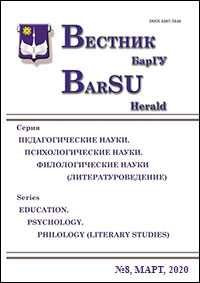WILD FIELD AND STEPPE IMAGES IN CREATION OF COSSACKPOET N. N. EVSEEV (“DIKOE POLE” AND “KRILATIY SHUM”)
Keywords:
Russian literature abroad; Cossack emigrant-poets; N. N. Evseev; images of the field; images of the steppeAbstract
This article examines constant images of steppe and field in the context of Russian culture and literature, especially creation of Great Russian Cossack poet N. N. Evseev. Evseev`s works are still unknown in his Motherland. The concept “field” in Evseev’s creation is a symbol of the space mastered by the Cossacks, where there is
a possibility of peaceful labor in their native land, reflections on the highest sacred values and conversation with God. Mostly the concept “steppe” is a natural-historical nature, often correlated with the image of Russia, a place where you feel a connection with the ancestors, where the free Cossack spirit lives, but where you can’t return to the exiled Cossack. On the one hand, both of these concepts merge in the concept of “Wild Field”, and on the other in the concept of “open space”, summarizing the emigrant`s memories, his longing for everything native. Evseev inherited the traditions of depicting national space in Russian classics; he was close in his understanding of its basic features to his contemporary M. A. Sholokhov. Thus, the creative heritage of Evseev broadens the concept of basic national constants
and makes a significant contribution to national geosophy and geopoetic.
Ref.: 9 titles.
Downloads
Published
Issue
Section
License
Copyright (c) 2023 Вестник БарГУ Серия "Педагогические науки. Психологические науки. Филологические науки"
Это произведение доступно по лицензии Creative Commons «Attribution-NonCommercial» («Атрибуция — Некоммерческое использование») 4.0 Всемирная.
Авторы сохраняют за собой право заключать определенные договорные соглашения, касающиеся неисключительного распространения опубликованной версии работы (например, размещать ее в институциональном репозитории, публикация в книге) со ссылкой на ее первоначальную публикацию в этом журнале.





